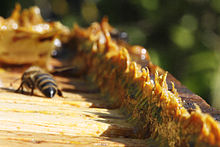skullcap- great for headaches!
Headaches are annoying. They get in the way of feeling productive and healthy, and frankly, are no fun. And they are unfortunately common because of their many causes, including low blood sugar, dehydration, allergies, constipation, eye stress, emotional tension, too much alcohol, not enough sleep... the list goes on.
But I also hate taking a pill every time a headache appears. Most pills may give relief eventually, but take time to get into the blood system. Also, they may treat the pain, but they do not get to the root of the problem. One pill cannot help every cause of every headache. Based on the many causes above, if it did it would be a wonder drug.
Because there are many headache triggers, there are also many solutions that can better treat each headache depending on its cause. So, when a headache hits, you first need to take an inventory of what is going on in your life.
1. Did you not sleep well?
2. Did you eat too many sweets or cold foods such as ice cream or drink too much alcohol?
3. Did you eat something that may have triggered an allergic reaction?
4. Have you been under a lot of stress, either physically or mentally?
5. Have you not eaten enough or skipped a meal?
6. Have you been staring at the computer or television screen all day?
7. Have you been drinking water or tea during the day?
me and my journal
At one point in my life, when my headaches began to get out of control, I began to journal my habits during the day. I would note what I ate, how I felt in the morning and at night, and if and when a headache hit. It helped me to realize that my eating habits were not as good as I thought they were, and that sometimes I did not drink enough water. Since then, I've found that many of my headaches are caused by a) not drinking water or b) eating something that triggered an allergic reaction.
If you've never kept a food/habit journal, I recommend trying it if you suffer from frequent headaches. If possible, have a small one so that you can have it with you during the day, so that you can write down notes without having to remember them when you get home. You never know what you will learn about yourself in the process!
Now, what to do about a headache if one happens to rear its ugly head?
Well, it's a little complicated, so bear with me. I'm going to deal with some remedies and activities first, and then follow up with another post on some other remedies and herbal blends. Otherwise, this post will be way too long.
Also, I'm not an expert herbalist or health practitioner, and so whatever I say is not the end-all be-all. There are many ways to relieve a headache, and some of them involve seeking other alternative help such as massage, chiropractic care, or other practices. However, based on my own experience, many of these remedies are worth a try and have no harmful side effects as long as they are taken in moderation.
lavender oil
2. Had too many drinks or too much of that ice cream sundae? And then, afterwards, experience a craving for pickles or salty fries? You may be experiencing a "vascular" headache. Rosemary Gladstar recommends quickly eating salty foods such as a cup of miso soup or briney olives. Or, try an alkalizing tea such as a mixture of dandelion root, burdock root, and yellow dock root with some skullcap tincture. Now, I'm not familiar with this particular herbal blend, but I am of the believe that a cup of miso cures anything. And it's tasty too. You can find a recipe for that on my other blog if you click on the link!
3. When I ingest wheat, I get a headache that lingers. Headaches caused by allergies can be complicated to identify, but with some persistence and care they can be identified and prevented. If your allergy is pollen and mold related, it's best to try to control your surroundings. I'm no expert on this, but a cup of Headache Tea made with lemon balm, feverfew, and lavender will help (recipe to follow soon).
If it's a food allergy, first identify the culprit. This may mean going to an allergist and having them do a test, and possibly going on an elimination diet. These diets are a pain, but are extremely helpful in identifying foods that are triggers. I would have never realized I was allergic to wheat unless I had done it myself.
However, sometimes a headache is triggered unknowingly by allergies, and so drinking some chamomile and lavender tea, relaxing, and eating simple foods such as vegetables, brown rice, and drinking lots of water can help to relieve this kind of headache.
If you like this post, you'll love my next one. Stay tuned and next week I'll talk more about stress headaches, dehydration, herbal tea blends, and the lovely herb skullcap. Can't wait to have you stop by again soon!
References:
A Modern Herbal- Chamomile
Rosemary Gladstar's Herbal Recipes for Vibrant Health










